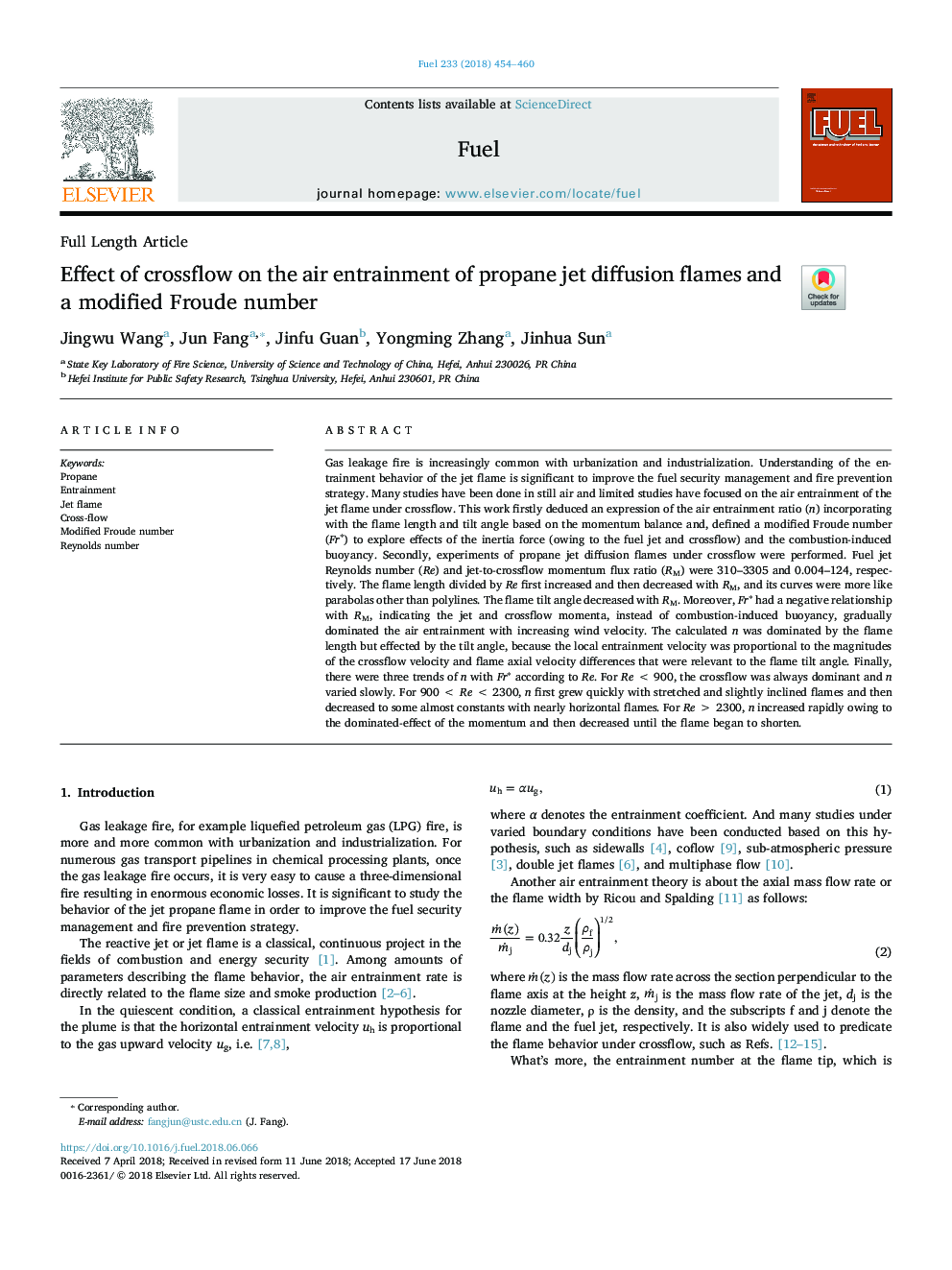| کد مقاله | کد نشریه | سال انتشار | مقاله انگلیسی | نسخه تمام متن |
|---|---|---|---|---|
| 6630244 | 1424931 | 2018 | 7 صفحه PDF | دانلود رایگان |
عنوان انگلیسی مقاله ISI
Effect of crossflow on the air entrainment of propane jet diffusion flames and a modified Froude number
دانلود مقاله + سفارش ترجمه
دانلود مقاله ISI انگلیسی
رایگان برای ایرانیان
کلمات کلیدی
موضوعات مرتبط
مهندسی و علوم پایه
مهندسی شیمی
مهندسی شیمی (عمومی)
پیش نمایش صفحه اول مقاله

چکیده انگلیسی
Gas leakage fire is increasingly common with urbanization and industrialization. Understanding of the entrainment behavior of the jet flame is significant to improve the fuel security management and fire prevention strategy. Many studies have been done in still air and limited studies have focused on the air entrainment of the jet flame under crossflow. This work firstly deduced an expression of the air entrainment ratio (n) incorporating with the flame length and tilt angle based on the momentum balance and, defined a modified Froude number (Frâ) to explore effects of the inertia force (owing to the fuel jet and crossflow) and the combustion-induced buoyancy. Secondly, experiments of propane jet diffusion flames under crossflow were performed. Fuel jet Reynolds number (Re) and jet-to-crossflow momentum flux ratio (RM) were 310-3305 and 0.004-124, respectively. The flame length divided by Re first increased and then decreased with RM, and its curves were more like parabolas other than polylines. The flame tilt angle decreased with RM. Moreover, Frâ had a negative relationship with RM, indicating the jet and crossflow momenta, instead of combustion-induced buoyancy, gradually dominated the air entrainment with increasing wind velocity. The calculated n was dominated by the flame length but effected by the tilt angle, because the local entrainment velocity was proportional to the magnitudes of the crossflow velocity and flame axial velocity differences that were relevant to the flame tilt angle. Finally, there were three trends of n with Frâ according to Re. For Reâ¯<â¯900, the crossflow was always dominant and n varied slowly. For 900â¯<â¯Reâ¯<â¯2300, n first grew quickly with stretched and slightly inclined flames and then decreased to some almost constants with nearly horizontal flames. For Reâ¯>â¯2300, n increased rapidly owing to the dominated-effect of the momentum and then decreased until the flame began to shorten.
ناشر
Database: Elsevier - ScienceDirect (ساینس دایرکت)
Journal: Fuel - Volume 233, 1 December 2018, Pages 454-460
Journal: Fuel - Volume 233, 1 December 2018, Pages 454-460
نویسندگان
Jingwu Wang, Jun Fang, Jinfu Guan, Yongming Zhang, Jinhua Sun,